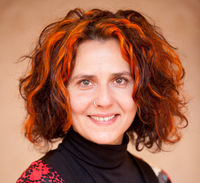Modelling social transmission: how relationships, group size and group structure influence social learning in wild and captive corvids

Humans are experts when it comes to learning from others. We learn by observing and imitating a wide range of other persons, starting with family members and expanding to teachers, friends, peers, or even unfamiliar persons. Further, an important learning strategy in humans is to conform with others, i.e. performing the same behaviour as the majority and/or trustable persons. In this project we investigate if crows, Corvus corone, and ravens, Corvus corax, apply similar social learning strategies. These two species are exceptionally suitable because, similar to humans, they exhibit a social system comprising on one side long-term partnerships and on the other side (sub-) group formation with high degrees of fission-fusion dynamics. Also, they maintain qualitatively different relationships with conspecifics. We will investigate how these various social networks influence the patterns of how social information spreads through populations of wild and captive birds. The results from our project will help us understanding the general principles underlying (human) culture.